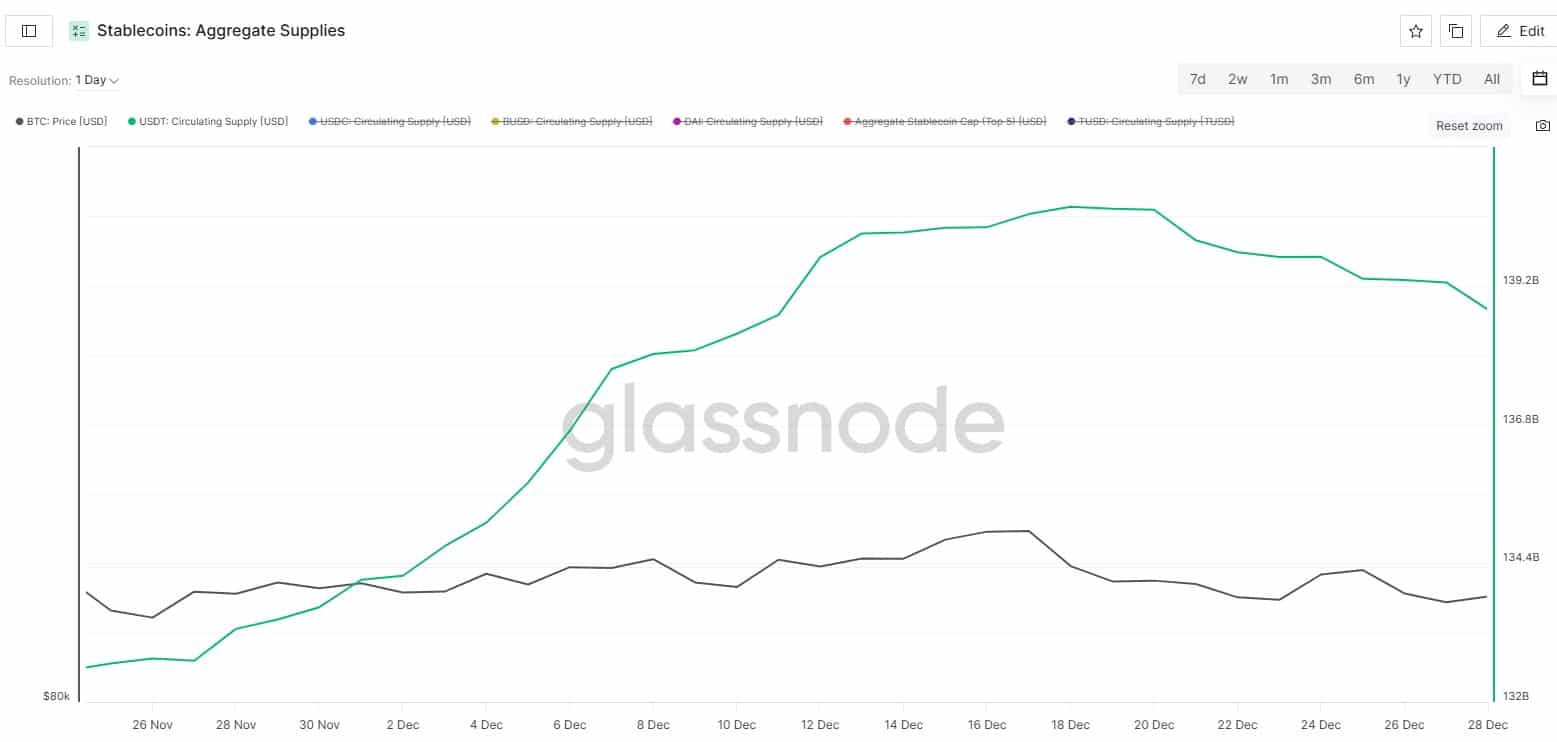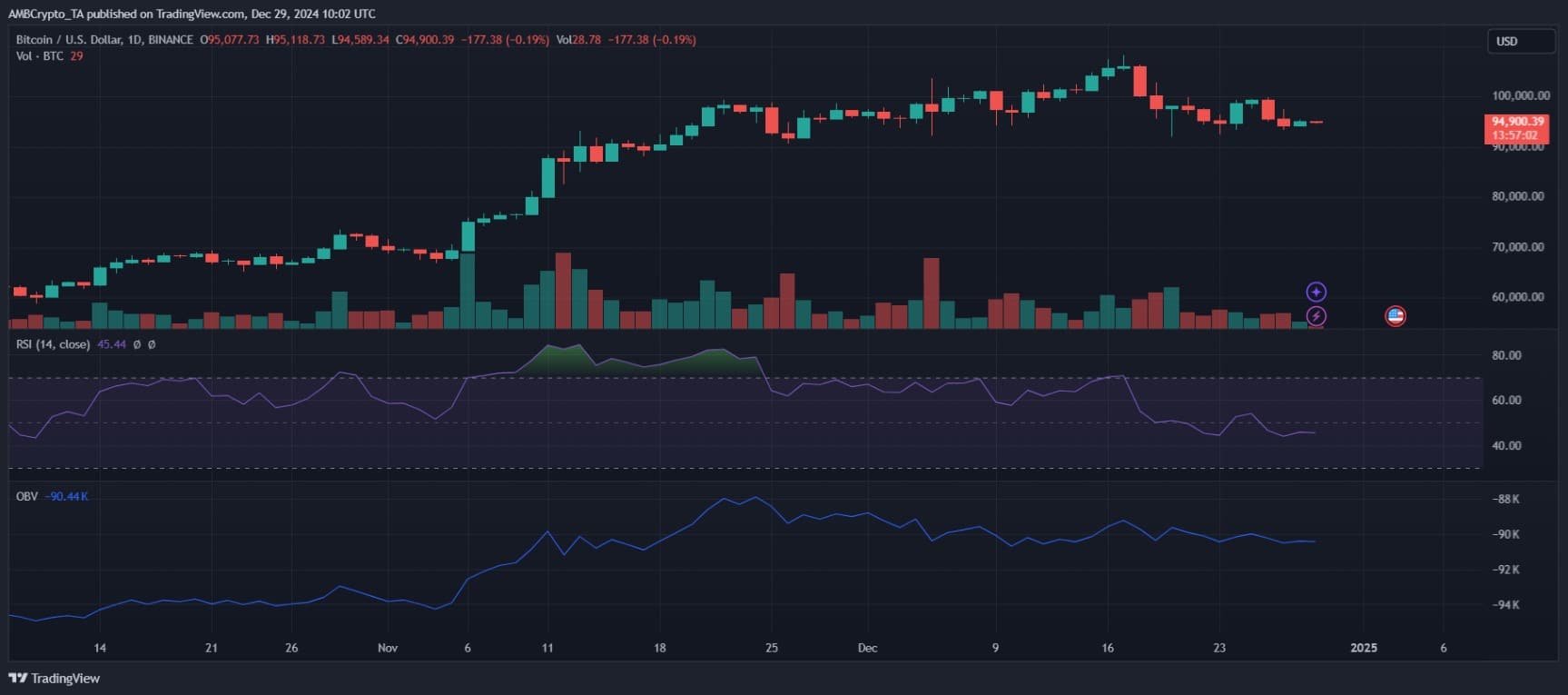-
The recent contraction of Tether’s (USDT) supply by $1.3 billion within just ten days has raised significant concerns regarding crypto liquidity and overall market dynamics.
-
This sharp decline reflects broader regulatory scrutiny and may signal a critical moment for investor sentiment amidst macroeconomic challenges.
-
According to COINOTAG, “The rapid decline in USDT emphasizes shifting narratives in the crypto space, indicating possible recalibrations in trading behavior.”
Tether’s $1.3 billion supply contraction raises alarms about liquidity across the crypto market as Bitcoin remains under pressure amidst regulatory scrutiny.
USDT Supply Contraction: Understanding the Factors
The recent plunge in USDT’s circulating supply—from approximately $140.5 billion to $139.2 billion—has caught the attention of market analysts. This contraction is indicative of several intertwining factors.
Firstly, regulatory scrutiny has intensified since significant events like the collapse of FTX, leading to greater caution among investors. This heightened vigilance may prompt redemptions in favor of more traditional fiat currencies.

Source: Glassnode
Secondly, trading volumes have substantially decreased across major cryptocurrency exchanges, highlighting reduced demand for liquidity in stablecoins, particularly correlating with Bitcoin’s stagnation near critical support levels.
Lastly, macroeconomic trends, such as rising treasury yields and a strengthening dollar, have led to a withdrawal of investment from risk-oriented assets, contributing to the observed contraction in USDT supply.
This notable drop is not merely a fleeting occurrence; it reflects ongoing adjustments within the market that may indicate a longer-term recalibration rather than a temporary trading slowdown.
Bitcoin Price Action Amid USDT Supply Decline
As USDT’s supply contracts, Bitcoin finds itself in a precarious position. BTC’s price has fluctuated around $94,900, as diminishing trading volume hints at weaker buying interest.
Key indicators show an RSI of just 45.44, which falls below the neutral threshold of 50, signaling a bearish outlook. The On-Balance Volume (OBV) has also dipped to -90K, pointing towards net capital outflows, as investors look to reduce their exposure to risk.

Source: TradingView
These metrics suggest a strong correlation between the contraction of USDT’s supply and the liquidity challenges Bitcoin faces, ultimately limiting its ability to gain upward momentum.
Additionally, market wariness might stem from the dual pressures of regulatory uncertainties and macroeconomic factors, which compound existing selling pressures on Bitcoin.
The cryptocurrency’s struggle to regain previous support levels paints a picture of a broader recalibration phase, with the dwindling liquidity of stablecoins acting as a significant barrier.
Implications for Crypto Market Liquidity
The contraction in USDT supply heralds potential liquidity challenges as the market approaches 2025. Stablecoins like USDT play a critical role in facilitating smooth capital flows between various digital assets.
A reduction of $1.3 billion in USDT signifies tighter market conditions, with increased risks of slippage and overall volatility. This constriction is likely to dissuade institutional traders who typically rely on ample liquidity, potentially resulting in diminished trading volumes across exchanges.
Moreover, these liquidity constraints may disproportionately affect altcoins, intensifying the volatility of smaller-cap assets.
As market players seek a safe haven, cryptocurrencies like Bitcoin and Ethereum may continue to dominate, yet speculative activities in decentralized finance (DeFi) and NFTs may face setbacks.
Should USDT’s supply remain suppressed without bolstered investor confidence or clarity in regulatory frameworks, the market might enter a phase characterized by reduced activity and limited arbitrage avenues—delaying potential price recoveries during downturns.
Conclusion
The noticeable contraction in Tether’s supply presents a complex scenario for the crypto market, highlighting the intertwined nature of liquidity and investor confidence. Investors should monitor these dynamics closely, as staying informed may provide vital insights into future market movements.
